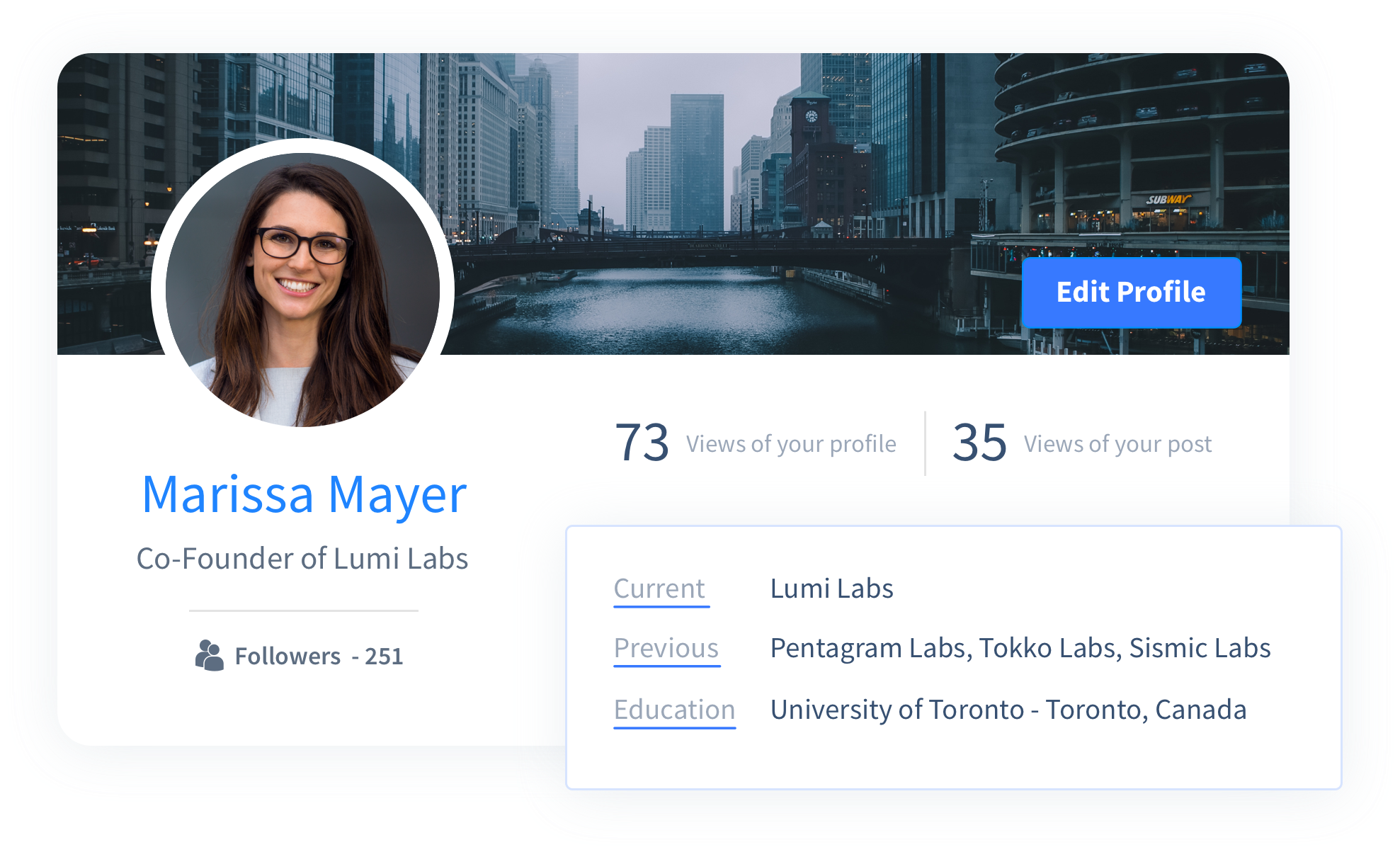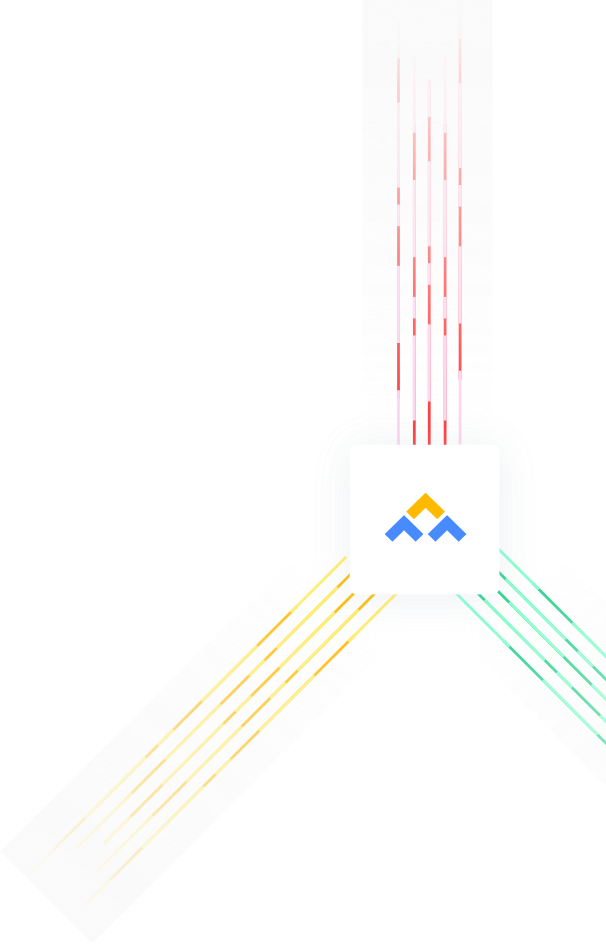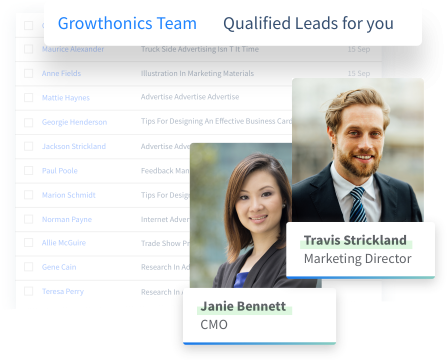Lead Generation:
A Complete Beginner’s Guide
John O'Shea
Your business growth heavily depends on a permanent acquisition of new customers. And you can achieve it by building a seamlessly working lead generation process.
This guide will cover the basic components, strategies, techniques, tools and ways to improve your company’s lead gen.
What Is Lead Generation?
Lead gen is a very complex process that is also a part of various business operations. That’s why there are plenty of ways to define it. For example, it is the first of many stages of a sales process, and arguably the most important one.
Or: It is the activity that aims to feed your business with customers. Or: it is an inalienable part of a marketing team’s effort. Or: It is the process of turning individuals/businesses into leads. Or:
Lead generation is systematically creating awareness and evoking interest of potential buyers in your product or services.
In our opinion, this definition is the closest to the very essence of lead gen. We’d like to point out several keywords in it.
1. Potential buyers, also known as target audience. Not all individuals or businesses are in equal need of your product and service. That’s why it’s crucially important to address the target audience.
2. Awareness and interest. A business needs to inform and draw attention of potential buyers, as well as make them “care.”
3. Creating. Some experts would use the word gaining. In our opinion, “create” reflects a more active position of business in this process.
4. Systematically. A company needs consistent strategy, aligned operation of several departments, and regular activities to make this process work and bring results.
What businesses need to generate leads and why?
There’s a popular quote: if your business doesn’t grow it dies (even if it doesn’t seem so on the surface). So, the simplest answer to this question is “all businesses.”
Benefits of lead gen:
1. Sustainability. Customer churn is inevitable. So your business can’t survive on retention alone.
2. Growth. Your business can’t expand without extra resources, above all money. You can only gain it through new buyers.
3. Expansion. When a business creates a new product/service or decides to expand to a new market, they need to build a new customer base there.
4. Influence. The more new businesses you attract, the more referrals you can potentially get, and the more brands you can add to your customer base.
5. Keeping potential. Certain products or services have longer sales cycles and the purchase heavily depends on a customer’s budget. Some leads might remain “dormant” for months or even years until they are ready for the next stage of their buying journey. That’s when they can recall your outreach.
Let’s take a closer look why different types of businesses need to generate:
1. Startups are rapidly growing businesses. That’s why they need a lot of money to invest in that growth.
2. Small businesses are often heavily dependent on day-to-day income. They need constant feed of potential customers for sustainability.
3. Medium companies are in a safer position when it comes to sustainability than small businesses. Often they would want to grow through expansion to new markets or promotion of new products.
4. Enterprises. It might seem that these types of companies are established businesses with brand, reputation, and solid client base. However, enterprises are vulnerable to stagnation, followed by decline. That’s why they shouldn’t stop the demand generation.

How to Generate Leads in the Digital Era
In the past, businesses mostly attracted leads through advertisements, networking, and direct outreach to potential clients.
Advertisers used any type of media available, from printed journals to TV, to banners, to aviation. In many cases, they would give false information and promises. It was hard if not impossible for their customers to find credible data about the products/services they were buying.
Networking included getting referrals from existing customers and for B2B – meeting your potential buyers at various events.
Direct outreach started with door-to-door sales and purchase offer send outs. Then it expanded to cold calls.
The internet changed sales and marketing processes dramatically. Let’s take a look at the key changes of the digital era:
- 1. Access to information within seconds empowers buyers who can now check any data you provide to them.
- 2. The buyer journey has changed. Buyers can take a more active role in the buying process. In many cases, they contact your sales team after having done substantial research online and know much about the market.
- 3. The rise of IT makes the presence on the Internet the must-have for any business. It also gives businesses more tools to influence buyers, e.g. through different types of content.
- 4. The abundance of information makes the buying process (especially B2B) much harder for buyers. Businesses that help potential customers to process this information through education efforts win at the end of the day.
Lead Generation Strategies and Tactics
Let’s take a look at types of lead generation strategies
Outbound Marketing
It is an active pursuit of potential clients, i.e. direct outreach.
Types of outbound marketing:
- 1. Cold calling
- 2. Cold emailing
- 3. Outreach via Social Media (LinkedIn, Twitter, Facebook)
- 4. Networking at events (conferences, conventions)
Team and roles:
- 1. Lead gen manager – creates campaign strategy, manages the process.
- 2. Lead researcher – looks for the potential buyers and their contact information.
- 3. Sales Development Representative – conducts outreach.
- 4. Writer creates a copy for emails, calls, messages.
Pros:
- 1. Targets buyers you want to acquire
- 2. Drives immediate results
- 3. Can catch your potential customers at the pre-awareness stage (when they understand they have a problem but don’t know about the available solution yet).
- 4. Human-to-human communication evokes trust and builds rapport
Cons:
- Some buyers don’t like direct outreach.
- The amount of potential buyers a sales development team can reach out to is limited.
Inbound Marketing
It is a strategy of building an Internet presence.
Inbound marketing includes:
- 1. Website – your digital representative office.
- 2. SEO – promoting your website
- 3. Creating educational content (videos, whitepapers, benchmarks, case studies)
- 4. Social media presence – creating influence pages and groups
- 5. Ranking & reviews websites presence (G2, Capterra, Glassdoor)
- 6. Getting awards (e.g., from Gartner)
- 7. Holding online and offline events.
- 8. Online advertisement.
Team and roles:
- 1. Head of Marketing, Head of Digital Marketing – creates strategy, manages team, and supervises the implementation.
- 2. Webmaster(s) – codes the website.
- 3. Designer – creates website design, infographics, etc.
- 4. Content writer and editor – creates content for the website and blog.
- 5. SEO specialist – builds keyword kernel for websites, tracks its performance.
- 6. SMM – works with pages and groups on social networking websites.
- 7. PPC specialist – creates and implements ads strategy.
- 8. Link Builder – negotiates backlinks for the website.
- 9. Video creators.
Pros:
- 1. Gives your buyers a sense of control over the process.
- 2. Can target much larger audiences compared to sales teams.
- 3. The amount of time that your potential buyers can spend on your website exceeds the time they can spend talking to your sales.
- 4. Gives a more comprehensive educational experience through different types of content.
Cons:
- 1. Building Internet presence takes time, business will receive results in months or even years.
- 2. It’s much harder to control who you target. More often than not, websites provide large organic traffic that doesn’t convert to leads.
Which type of Outreach is best?
From our own experience and experience of our clients, we know that combining Inbound and Outbound marketing is the best strategy for the business.
Here are some ideas to support this argument:
- 1. Your buyers would want to find you online even if you contacted them via phone. And they’ll lose trust in your business if they don’t find anything about your business.
- 2. Potential buyers will be more willing to respond to direct outreach after pretargeting campaigns.
- 3. When your marketing team can’t reach certain clients (because they’re not aware of the solutions you can offer), your sales development team can.
What Is a Lead?
Similar to lead gen, there’s no single definition of a lead. Some identify it as contact data you’ve collected about a potential customer. Others talk about an interest in your company that a certain person has demonstrated.
Sales teams, however, state that not all people who showed interest and provided their contact data are proper material for customers. We suggest the following definition:
A lead is an identified individual who became aware and showed interest in your product/service and who matches your ideal customer profile.
Let’s take a closer looks at this definition:
- 1. An identified individual means that you know their name, contact data, and other information relevant to your sales process.
- 2. Awareness and interest means that this individual has come into contact with your business either via inbound or outbound channels.
- 3. Matching your ideal customer profile (ICP) means that this individual possesses the features that many of your customers have.
Here’s an example: content writers often visit the websites of competitors to see the strengths and weaknesses of the copy and educate themselves. They might even provide their contact data in exchange for a gated whitepaper. They’ve shown interest in your product, however, they don’t match your ICP. Therefore they cannot be considered leads.
This brings us to two important topics: lead quality and qualification.

Lead Quality
Like we mentioned above, not all individuals that are interested in our product/service can be a good match. That’s why it’s crucial to define certain guidelines for “lead quality.”
There are two main instruments to attain this goal:
- • Ideal Customer Profile
- • Lead Qualification
ICP is the set of features that you find in your customers and/or in the customers of your competitors. If you expand with the new product or to the new market, it is the features of a customer that you consider to be the best fit for your business.
ICP helps you sift out individuals/businesses that:
- • have no need in your product/service (e.g., a tiny cafe in London will never purchase a tree planting machine);
- • aren’t interesting for you because resources you spend on the customer aren’t worth the revenue they can bring (e.g., if your company sells wheat to large domestic distributors around the world, you won’t spend time negotiating with a small bakery on a tiny island);
- • cannot use your product/service because they have unmatching features (e.g. you sell an addon for Salesforce, and a company doesn’t use this program);
- • [for individuals] have no influence on the buying decision or decision-makers (e.g., if you are selling an AI that helps developers deliver better code, you won’t want to talk to the marketing manager).
ICP includes the following data:
- 1. Role in the company (e.g. CEO, CTO, Marketing Manager, Sales Head, Senior Researcher)
- 2. Firmographics:
- • Industry
- • Type of business (e.g. kindergartens, ecological NGOs, etc.)
- • Annual revenues
- • Number of employees
- • Geography (global, certain country, region, city)
- • Applied technologies (e.g. Google Workspace, electric engines in cars, etc.)
ICP is used by:
- 1. Sales teams (to create lists of leads they are going to target).
- 2. Marketing teams (as part of the lead scoring process).
Lead Qualification
Lead qualification is the process of determining whether a lead matches the ICP and has an intention to become a customer.
There are several types of qualified leads:
1. Marketing Qualified Lead (MQL)
It is a lead that has contacted your business via inbound channels, has been approved by a marketing team as a potential buyer and passed to a sales team. Some companies would use tracking apps that provide contact data of all the visitors of the website.
To qualify a lead, marketing would use lead scoring. They analyze the lead if the lead matches certain criteria and assign a certain number of points for each match. The higher the score is, the higher the quality of the lead is.
The criteria for lead scoring include:
- 1. ICP
- 2. Behavior
We’ve talked about ICP already. The behavior includes but is not limited to the following:
- • how many and which pages were visited (e.g. product pages vs. about company and jobs)
- • the time spent on pages
- • the downloads of gated content
- • forms filled out
- • the engagement outside the website.
2. Sales Qualified Lead (SQL)
As mentioned above, marketing passes MQLs to a sales team. That’s the point of rapture. More often than not, sales wouldn’t accept certain leads because they don’t match their own criteria. That’s why companies need a powerful marketing-sales alignment.
This being said, sales continue working with accepted MQLs to turn them into SQLs and guide through a buying process up to the purchase.
SQL is a lead that has demonstrated an interest in purchasing a product/service.
In the outbound process, the sales development team generates SQLs.
Different sales organizations have different criteria for SQLs.
Tools your business needs to generate leads
One of the benefits of the digital era is the abundance of software tools that can help you automate your lead generation efforts. In this section of the article, we would provide the types of tools your inbound and outbound teams will need to make their work more efficient.
1. Customer relationship management (CRM)
These tools can help you:
- 1. organize your sales pipeline
- 2. track your potential customers as they move from leads to buyers
- 3. keep all the contact data in one place
- 4. plan, implement, monitor and control outbound outreach
- 5. analyze your campaigns to introduce changes
There many different CRMs, we suggest choosing it depending on the complexity of your sales process. For example, tools like Salesforce will be great for large enterprises as they are hard to maintain (you need a team of programmers), contain tons of different features that might be redundant for teams that manage short and simple sales cycles.
Examples: Salesforce, Hubspot Sales Hub, Pipedrive, Zoho.
2. Content management system (CMS)
These are tools that help you:
- 1. Avoid coding every page on your website blog
- 2. Create copy and publish it on your website and social networks
- 3. Manage content plan and calendar
- 4. Achieve certain content goals (e.g., readability score, SEO)
Examples: WordPress, Hubspot, Joomla.
3. SEO tools
These solutions are necessary for:
- 1. Finding keywords for your website
- 2. Analysis of your website/page performance (including vs. competitors)
- 3. Insights into content creation
- 4. Monitor and control your promotion in Google
- 5. Reports on events that have a negative impact on your SEO
3 unpleasant facts about SEO tools:
- 1. They are completely pointless if you don’t have a great SEO manager and a knowledgeable content writer.
- 2. They are expensive.
- 3. You cannot purchase just one tool and hope it’ll be enough.
Examples: Ahrefs, Semrush, Google Analytics, Google Search Console (non interchangeable).
4. Contact Data tools
They are necessary:
- 1. To find potential buyers
- 2. To get their contact information.
There are several types of such platforms:
- 1. Large databases of companies and their decision-makers (renew data once in 3-6 months).
- 2. Tools that collect data from cookies and generate contact data based on predictions
- 3. LinkedIn that resells the data of its users via its special tool.
Examples: LinkedIn Sales Navigator, ZoomInfo, Prospect.io
5. Cold Outreach tools
Sales use these solutions to:
- 1. Conduct email outreach, monitor and control performance
- 2. Automate calling
- 3. Analyze calls (AI) to improve calls performance.
Examples: MailChimp, Gong, Ameyo.
ROI of Lead Generation
When it comes to sales process efficiency, businesses often use the two following indicators:
- 1. Customer acquisition cost (CAC) – amount of money necessary to acquire one customer. It includes the cost of one lead. Part of CAC is the cost of a Lead, i.e., the amount of money you spend to acquire one lead via inbound or outbound outreach.
2. Customer Lifetime Value (CLV) is the amount of money your business can get from one client.
Obviously, your CLV cannot be lower than CAC. Furthermore, the healthy CLV-to-CAC ratio is 3 to 1. That means your customer needs to generate revenue that is three times as big as the cost of their acquisition.
The goal of any business is to increase CLV while decreasing CAC. And one of the efficient ways to do it is to improve the ROI of your lead generation.
How to Improve the ROI of your Lead Gen?
One of the most efficient ways to achieve it is to outsource your lead generation. It has a number of benefits:
1. Save money on:
- • SDR salaries (a team of SDRs in an outsourcing company will cost less than hiring a person in the UK).
- • Management efforts (outsourcing companies have their own management to monitor, train, and control SDRs).
- • Lead gen tools (most companies purchase pricy lead generation tools for their large teams so you don’t need to do it)
2. Save time on:
- • SDR ramping (most SDRs in outsourcing companies ramp much quicker due to larger experience, as they stay in profession for 4-5 years straight)
- • Vacations (while your SDR is on vacation, outsourcing company will provide a replacement)
- • Training (you won’t have to train an SDR without any experience).
3. Retain control over your SDRs through:
- • regular communication
- • reporting
4. Obtain:
- • Experience of SDRs who have conducted multiple campaigns
- • Expertise of outsourcing company that tries to keep up with latest trends
- • Innovative approaches to sales development that outsourcing companies tried with other clients.
How do we know all that? Our company Growthonics provides outsourcing lead generation services and helps clients in the UK to improve their lead gen ROI.
Ready to outsource your lead generation?
Book a call with Growthonics today to learn how we can support your business growth.
Subscribe to our mailing list
Why pay for another Database?
We do the work for you.
Growthonics data analysts manually source and qualify ideal prospect contact information tailored to your target industry’s
60% of sales reps spend their day prospecting and only 40% of their day on the phones to prospects
We believe they should be focusing on selling rather than manually searching through databases to find leads


This is how we manage
your Prospecting.
Step 1
We profile your perfect lead
Your dedicated account manager will work with you to understand your perfect lead so we can prepare both our strategists and tools to source the same quality of leads you are currently sourcing in-house – but faster.


Step 2
Our strategists source leads customised for you
Technology cannot completely replace humans, and therefore our work begins by having professionals identify leads precisely matching your requirements.


Step 3
We use advanced technology in the background to source more leads and find accurate contact details.
We are not another database but instead have access to over 500 million leads through other data sources. Our proprietary technology speeds up the data collection process.
Access to over 500 million contacts worldwide
We check all email addresses before you receive them.
Less than 2% bounce rate
We check all email addresses before you receive them.


Step 4
View your leads as they are delivered around the clock
We do not require any legwork from you, however if you want to view your leads as they are generated around the clock on your data spreadsheet or CRM.




Want us to take this a step further and deliver warm qualified leads direct to your inbox?
How much does Growthonics cost?
Completely secure and GDPR-compliant data
Growthonics is committed to full compliance with international data regulations. We are a fully GDPR compliant data company and we have partnered with top law firms and specialist GDPR advisors to ensure compliance.
Find out how we can help
Our Offices
China Works,
Black Prince Road, Vauxhall,
London, SE1 7SJ
GROWTHONICS © 2022 ALL RIGHTS RESERVED






